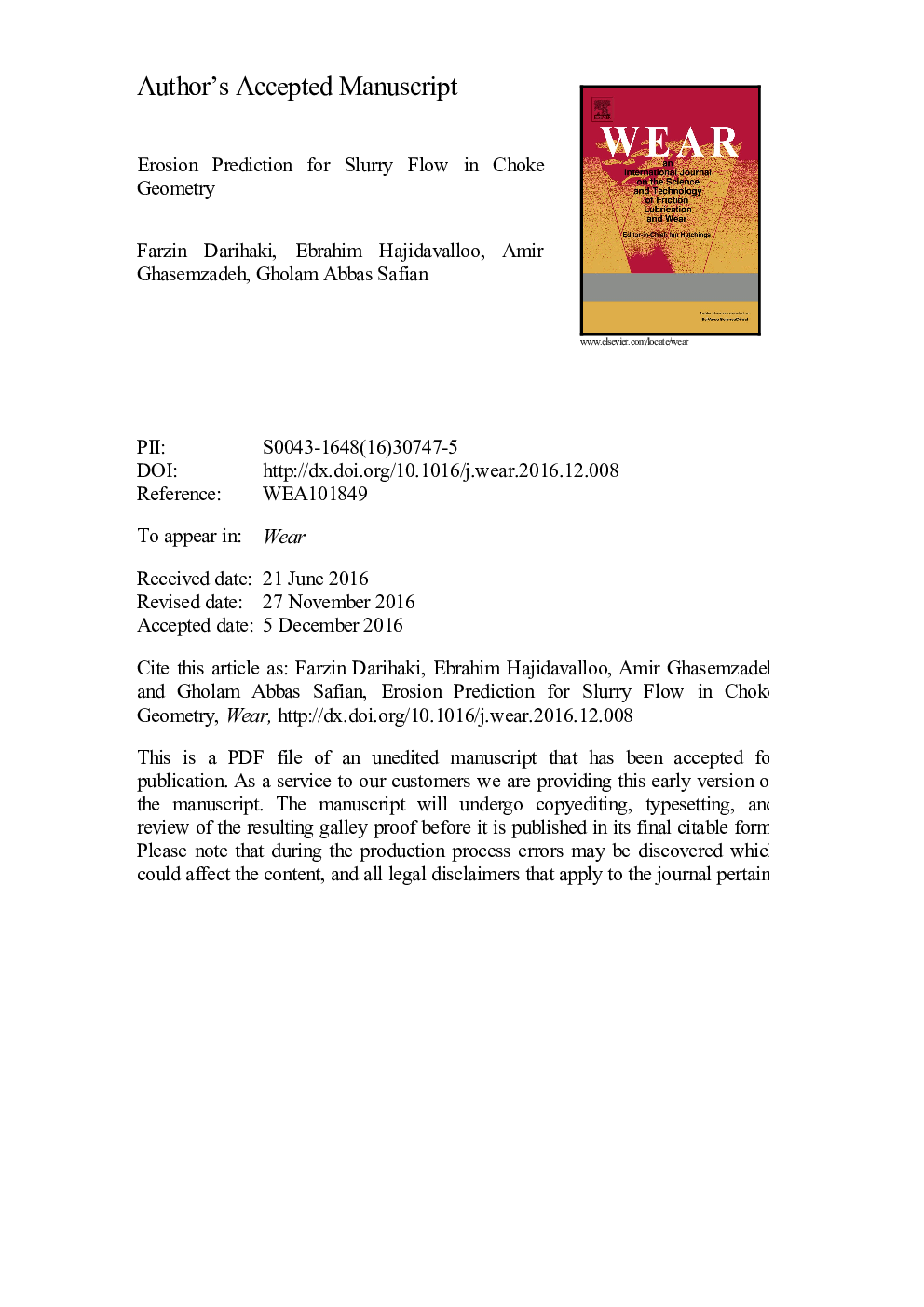| Article ID | Journal | Published Year | Pages | File Type |
|---|---|---|---|---|
| 4986766 | Wear | 2017 | 29 Pages |
Abstract
Erosion damage is common in many industries and one of the flow components which may experience severe erosion rates is choke geometry. Choke valves in wellhead or well completion may experience such conditions. In the present study, Computational Fluid Dynamic (CFD) was employed to calculate erosion for a choke geometry constructed of aluminum. The Eulerian-Lagrangian approach was utilized for continuous and discrete phase calculations in which different turbulence models were implemented to investigate the importance of erosion mechanisms in the choke geometry. Meanwhile, various erosion models were examined to achieve accurate erosion prediction. Afterward, two modifications in the geometry were made to see how erosion will be changed in different sections. It was revealed that the modifications can affect the dominating erosion mechanisms and newly designed profiles can reduce the erosion rate in different parts of the geometry significantly. Finally, erosion rate for carbon steel material which might be found in the oil and gas production systems was compared with the one of original aluminum case and it was found that thickness loss rate for the carbon steel case is one-third of the aluminum one in the most parts of the choke and much smaller on contraction plane.
Related Topics
Physical Sciences and Engineering
Chemical Engineering
Colloid and Surface Chemistry
Authors
Farzin Darihaki, Ebrahim Hajidavalloo, Amir Ghasemzadeh, Gholam Abbas Safian,
